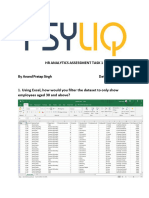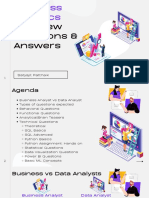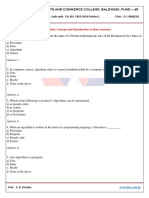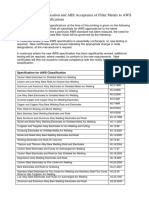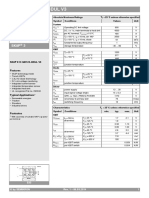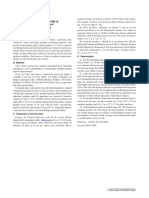0% found this document useful (0 votes)
42 views4 pagesData Analyst Interview Prep
The document provides a comprehensive guide for data analyst interview preparation, covering SQL queries, Power BI techniques, and behavioral questions. It includes sample SQL queries for various scenarios, such as calculating salaries, customer orders, and product revenues, as well as Power BI strategies for dashboards and data analysis. Additionally, it offers behavioral question responses related to data handling, analysis, and communication skills.
Uploaded by
J HarishCopyright
© © All Rights Reserved
We take content rights seriously. If you suspect this is your content, claim it here.
Available Formats
Download as PDF, TXT or read online on Scribd
0% found this document useful (0 votes)
42 views4 pagesData Analyst Interview Prep
The document provides a comprehensive guide for data analyst interview preparation, covering SQL queries, Power BI techniques, and behavioral questions. It includes sample SQL queries for various scenarios, such as calculating salaries, customer orders, and product revenues, as well as Power BI strategies for dashboards and data analysis. Additionally, it offers behavioral question responses related to data handling, analysis, and communication skills.
Uploaded by
J HarishCopyright
© © All Rights Reserved
We take content rights seriously. If you suspect this is your content, claim it here.
Available Formats
Download as PDF, TXT or read online on Scribd
/ 4














































